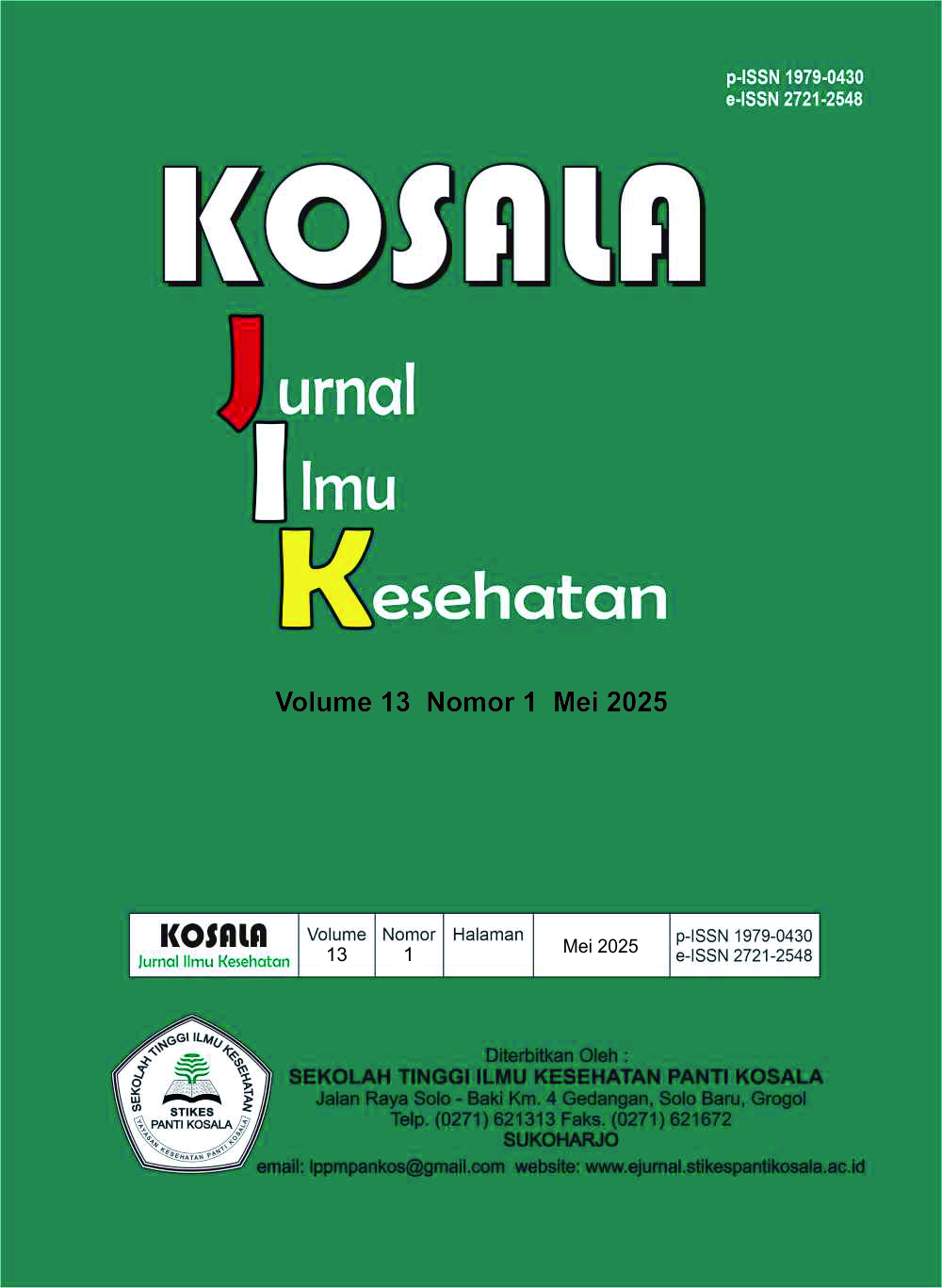LAMA SAKIT MEMPENGARUHI NILAI ANKLE BRACHIAL INDEX PADA PENDERITA DIABETES MELLITUS
Main Article Content
Abstract
Prevalensi Diabetes Mellitus (DM) semakin meningkat dan diperkirakan mencapai 28,5 juta orang pada tahun 2045. DM adalah masalah utama dalam pengendalian PTM di Jawa Tengah. Sedangkan di Kota Surakarta, DM menduduki urutan yang kedua. Salah satu indikator terjadinya ulkus kaki diabetik adalah nilai Ankle Brachial Indeks (ABI) yang rendah, sehingga perlu ada pengukuran nilai ABI secara rutin. Selain itu juga perlu diketahui faktor-faktor yang mempengaruhi nilai ABI pada penderita DM. Sehingga penting dilakukan penelitian yang bertujuan untuk menganalisis faktor yang berhubungan dengan nilai ABI. Penelitian ini dilakukan dengan pendekatan cross-sectional dengan desain korelatif. Untuk mengetahui nilai ABI, menggunakan tensimeter untuk mengukur tekanan darah pada tangan dan kaki. Jumlah responden dalam penelitian ini sebanyak 156 penderita DM. Hasil analisis menunjukkan bahwa nilai ABI tidak dipengaruhi oleh jenis kelamin (? = 1.000), usia (? = 0.067), dan riwayat ulkus kaki diabetik (? = 0.187). Sedangkan untuk hasil hubungan antara lama sakit dan nilai ABI didapatkan nilai ? = 0.045 yang artinya ada hubungan. Sehingga dapat diambil kesimpulan bahwa faktor yang mempengaruhi nilai ABI pada penderita DM adalah lama sakit.
Kata kunci: ABI; diabetes mellitus; lama sakit; risiko; ulkus kaki
The prevalence of Diabetes Mellitus (DM) is increasing and is estimated to reach 28.5 million people by 2045. DM is the main problem in NCD control in Central Java. Meanwhile, DM ranks second in the city of Surakarta. One of the indicators of the occurrence of diabetic foot ulcers is a low Ankle Brachial Index (ABI) value, so there needs to be a routine measurement of the ABI value. In addition, it is also necessary to know the factors that affect the ABI value in DM patients. Therefore, it is essential to research and analyze factors related to ABI values. This research was conducted using a cross-sectional approach with a correlative design. To find out the ABI value, use a tensiometer to measure blood pressure in the hands and feet. The number of respondents in this study was 156 DM patients. The results of the analysis showed that the ABI value was not affected by gender (? = 1,000), age (? = 0.067), and history of diabetic foot ulcers (? = 0.187). As for the relationship between the length of illness and the ABI value, the value of ? = 0.045 was obtained, which means there is a relationship. So, it can be concluded that the factor that affects the ABI value in DM sufferers is the length of illness.
Keywords : ABI; diabetes mellitus; leg ulcers; length of illness; risk
Downloads
Article Details

This work is licensed under a Creative Commons Attribution-NonCommercial 4.0 International License.
The copyright of the received article shall be assigned to the journal as the publisher of the journal. The intended copyright includes the right to publish the article in various forms (including reprints). The journal maintains the publishing rights to the published articles. Authors are permitted to disseminate published articles by sharing the link/DOI of the article at the journal. Authors are allowed to use their articles for any legal purposes deemed necessary without written permission from the journal with an acknowledgment of initial publication to this journal.
